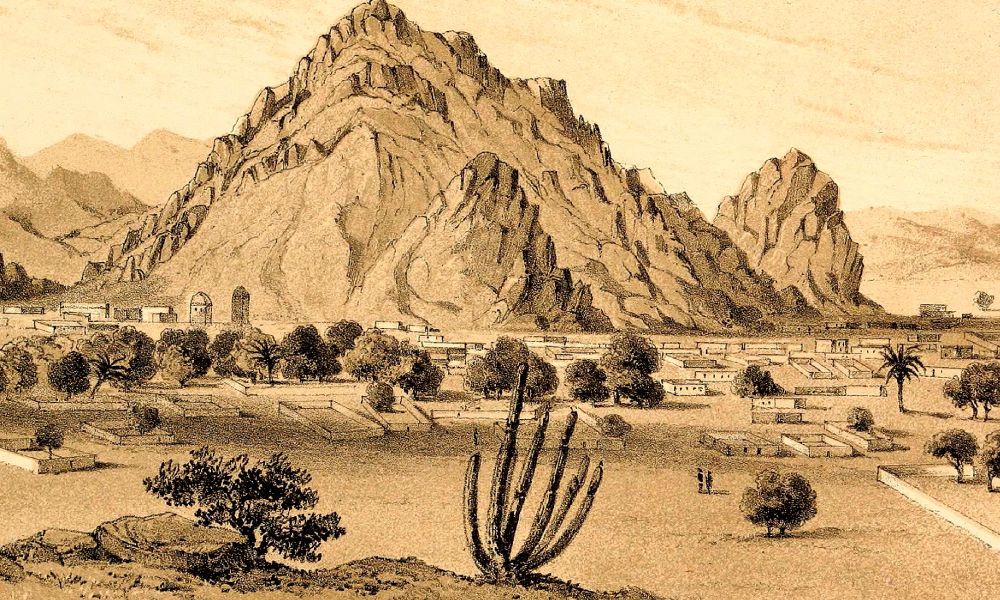5fish
Well-Known Member
- Joined
- Jul 28, 2019
- Messages
- 10,738
- Reaction score
- 4,570
The Gila Trail was the southern way to California and open year around, no Donner party stories.

 truewestmagazine.com
truewestmagazine.com
snip...
Over the years—and we’re talking many years—it went by several names: Sonora Road, Kearny Trail, Gila Trail, Butterfield Stage Trail, Old Gila Trail, Fort Yuma Road, Southern Route, Emigrant Road/Trail, Southern Emigrant Trail. And, for a while, it probably had no name at all.
snip...
This being desert, the trail followed mostly rivers—the San Pedro, the Gila. It stretched from Texas, or Santa Fe, New Mexico (that one became Cooke’s Road when Lt. Col. Philip St. George Cooke led wagons and the Mormon Battalion south and west during the Mexican-American War), traversed southern New Mexico and southern Arizona, and then on to San Diego or Los Angeles.
snip...
After the Civil War, cattle crossed the Gila. Indians had ended most ranchers’ dreams in the 1850s, but, Faulk wrote, “with the return of soldiers and the creation of reservations, ranching could spread once again—for both soldiers and Indians, along with the miners, had to be fed.”
snip... the end... Gold in !870...
And into California. To Julian, where in 1869 a former slave discovered gold in the Cuyamaca Mountains and set off another California gold rush, and where Joseph Treshil’s blacksmith shop has been turned into the Julian Pioneer Museum. And to San Diego, where Wyatt Earp ran three gambling halls in what is now the city’s historic and funky Gaslamp Quarter. The towns along the Old Gila have changed, of course. Some remain dusty brown, but most are cosmopolitan. Yet as Faulk once lamented, youngsters should “know that the spark of the telegraph and the lonesome whistle of a freight train at midnight are as much a part of the Southwest as is the asphalt and concrete of a superhighway. These are what made possible both the present and the future.”

On the Old Gila Trail
Over the years—and we’re talking many years—it went by several names: Sonora Road, Kearny Trail, Gila Trail, Butterfield Stage Trail, Old Gila Trail, Fort
snip...
Over the years—and we’re talking many years—it went by several names: Sonora Road, Kearny Trail, Gila Trail, Butterfield Stage Trail, Old Gila Trail, Fort Yuma Road, Southern Route, Emigrant Road/Trail, Southern Emigrant Trail. And, for a while, it probably had no name at all.
snip...
This being desert, the trail followed mostly rivers—the San Pedro, the Gila. It stretched from Texas, or Santa Fe, New Mexico (that one became Cooke’s Road when Lt. Col. Philip St. George Cooke led wagons and the Mormon Battalion south and west during the Mexican-American War), traversed southern New Mexico and southern Arizona, and then on to San Diego or Los Angeles.
snip...
After the Civil War, cattle crossed the Gila. Indians had ended most ranchers’ dreams in the 1850s, but, Faulk wrote, “with the return of soldiers and the creation of reservations, ranching could spread once again—for both soldiers and Indians, along with the miners, had to be fed.”
snip... the end... Gold in !870...
And into California. To Julian, where in 1869 a former slave discovered gold in the Cuyamaca Mountains and set off another California gold rush, and where Joseph Treshil’s blacksmith shop has been turned into the Julian Pioneer Museum. And to San Diego, where Wyatt Earp ran three gambling halls in what is now the city’s historic and funky Gaslamp Quarter. The towns along the Old Gila have changed, of course. Some remain dusty brown, but most are cosmopolitan. Yet as Faulk once lamented, youngsters should “know that the spark of the telegraph and the lonesome whistle of a freight train at midnight are as much a part of the Southwest as is the asphalt and concrete of a superhighway. These are what made possible both the present and the future.”



